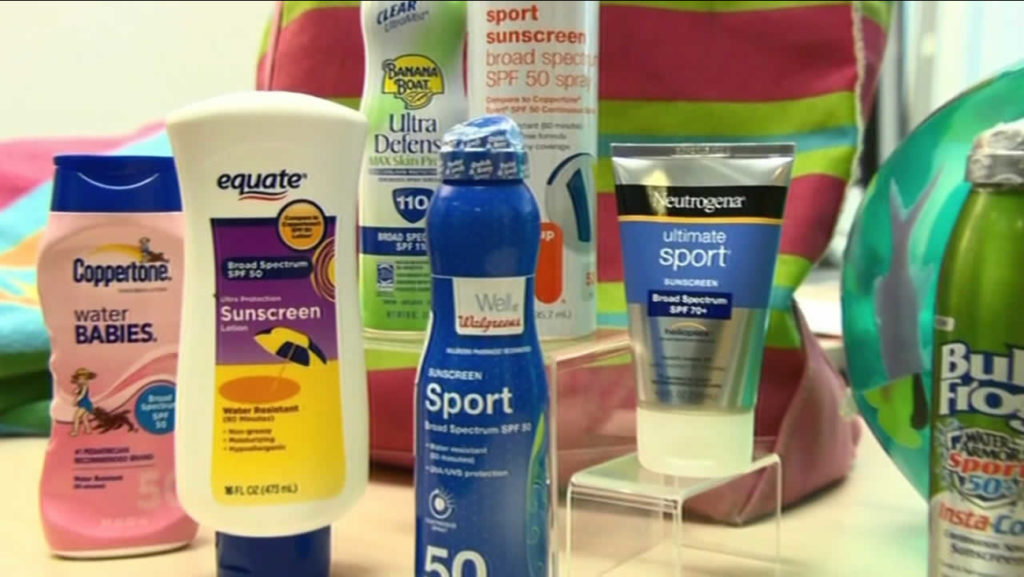Camping and hiking are cherished outdoor activities that allow us to connect with nature, explore breathtaking landscapes, and escape the hustle and bustle of daily life. However, while immersing ourselves in the beauty of nature, we must also prioritize our skin’s health and protection. The sun’s powerful rays can wreak havoc on our skin, leading to sunburns, premature aging, and even skin cancer. Choosing the right sunscreen is an essential part of your outdoor adventure toolkit. In this guide, we’ll delve into the key factors to consider when selecting the best sunscreen for camping and hiking, ensuring you stay safe, comfortable, and well-protected throughout your journey.
Understanding Sunscreen Basics
Before we dive into the specifics of selecting a sunscreen for camping and hiking, let’s briefly understand the basic components of sunscreen and how it works. Sunscreens are products designed to protect the skin from the sun’s harmful ultraviolet (UV) radiation. There are two types of UV radiation that can impact our skin: UVA and UVB rays. UVA rays penetrate deep into the skin, leading to premature aging, while UVB rays cause sunburn.
Broad-spectrum sunscreens are formulated to shield the skin from both UVA and UVB rays, making them ideal for outdoor activities. Sunscreens contain active ingredients that either absorb, reflect, or scatter the UV radiation before it can damage the skin. These active ingredients are often categorized into chemical and physical blockers.
Factors to Consider When Choosing Sunscreen for Camping and Hiking
- SPF (Sun Protection Factor): SPF is a critical factor to consider when selecting sunscreen. The SPF number indicates the level of protection the sunscreen offers against UVB rays. While higher SPF numbers provide greater protection, it’s essential to remember that no sunscreen can offer 100% protection. Experts generally recommend using a sunscreen with an SPF of at least 30 for outdoor activities.
- Water Resistance: When camping and hiking, you’re likely to sweat and may come into contact with water sources. Opt for a water-resistant sunscreen that can withstand sweat and occasional splashes. Look for sunscreens labeled “water-resistant” or “very water-resistant,” but remember to reapply after swimming or excessive sweating.
- Broad-Spectrum Protection: Ensure the sunscreen provides broad-spectrum protection against both UVA and UVB rays. This comprehensive coverage is crucial for safeguarding your skin from various types of UV radiation.
- Application and Texture: Choose a sunscreen that is easy to apply and doesn’t leave a greasy or sticky residue. Sunscreen comes in various forms, including lotions, creams, gels, and sprays. Pick a texture that you find comfortable and convenient for reapplication.
- Packaging: For camping and hiking, portability is key. Consider sunscreens with travel-friendly packaging that won’t leak or spill in your backpack.
- Ingredients: Read the label to check for any potential allergens or skin irritants. If you have sensitive skin, opt for sunscreens with gentle ingredients and hypoallergenic formulations.
- Environmental Impact: As responsible outdoor enthusiasts, it’s important to consider the environmental impact of the products we use. Look for sunscreens that are labeled as reef-safe and free from harmful chemicals like oxybenzone and octinoxate, which can contribute to coral reef damage.
Types of Sunscreens
- Chemical Sunscreens: These sunscreens contain organic compounds that absorb UV radiation and then release it as heat. They are generally lightweight and spread easily on the skin. However, some individuals might be sensitive to certain chemical filters, so it’s advisable to do a patch test before extended use.
- Physical Sunscreens: Also known as mineral sunscreens, these contain active ingredients like zinc oxide and titanium dioxide. They create a physical barrier on the skin that reflects and scatters UV radiation. Physical sunscreens are often preferred for their gentle nature and immediate effectiveness upon application.
Top Sunscreens for Camping and Hiking
- Neutrogena Ultra Sheer Dry-Touch Sunscreen SPF 50: This broad-spectrum sunscreen is known for its non-greasy, fast-absorbing formula. It’s water-resistant and provides excellent protection for outdoor activities.
- EltaMD UV Clear Broad-Spectrum SPF 46: This sunscreen is beloved for its gentle ingredients and lightweight feel. It’s suitable for sensitive skin and provides both UVA and UVB protection.
- Coppertone Sport Sunscreen Lotion SPF 50: Designed for active individuals, this sunscreen is water-resistant and stays put even during vigorous outdoor activities. It offers strong protection against UV rays.
- La Roche-Posay Anthelios Melt-in Milk Sunscreen SPF 60: Known for its high SPF and effective broad-spectrum protection, this sunscreen is suitable for both face and body. Its nourishing formula is ideal for prolonged exposure to the elements.
- Badger Active Natural Mineral Sunscreen Cream SPF 30: A great option for those seeking a natural, physical sunscreen. It’s water-resistant, reef-safe, and contains organic ingredients.
Sunscreen Application and Reapplication Tips
Applying sunscreen correctly is as important as choosing the right one. Follow these tips to ensure effective sun protection:
- Apply sunscreen generously to all exposed skin areas, including the face, neck, ears, and any other uncovered parts.
- Reapply sunscreen every two hours, or more frequently if sweating or swimming.
- Don’t forget easily overlooked areas like the back of the neck, tops of ears, and the scalp part.
- Use lip balm with SPF to protect your lips from the sun.
Conclusion
Camping and hiking offer incredible opportunities to connect with nature and rejuvenate your spirit. However, the sun’s rays can pose a threat to your skin’s health. By selecting the right sunscreen for your outdoor adventure, you can ensure that your skin remains well-protected, allowing you to fully enjoy the beauty and serenity of the wilderness. Consider factors such as SPF, water resistance, broad-spectrum protection, and your own skin’s needs when choosing a sunscreen. With the right sunscreen in your backpack, you’re ready to embark on a safe and enjoyable journey into the great outdoors.

